Do you have a question about the Yamaha TRACER 700 2020 and is the answer not in the manual?
Owner's responsibilities for safe motorcycle operation and rider qualifications.
Essential riding techniques and visibility tips to avoid accidents.
Recommends essential protective gear for rider safety and injury prevention.
Warnings on carbon monoxide poisoning and safe loading practices.
Advice on using genuine parts and caution with aftermarket items and tires.
Instructions for securing the vehicle for transport to prevent damage.
Identifies key components visible from the left side of the motorcycle.
Identifies key components visible from the right side of the motorcycle.
Locates and briefly describes handlebar controls and dashboard instruments.
Explains the anti-theft system, key types, and handling precautions.
Details the function of the ignition switch and how to lock the steering.
Explains the meaning and behavior of all dashboard indicator and warning lights.
Describes the digital display, speedometer, tachometer, fuel meter, and clock.
Identifies and details the operation of all switches located on the handlebars.
Operation, adjustment, and function of clutch lever, brake lever, and pedal.
Instructions for operating the fuel tank cap and basic fuel system checks.
Information on fuel hoses, catalytic converter, seat, and helmet holding cable.
Guides for adjusting front fork spring preload and rebound damping.
Details on sidestand operation and its role in the ignition safety system.
Essential checks of fuel, engine oil, and coolant levels before operating the vehicle.
Procedures for checking brake fluid, pads, and overall system operation.
Inspection of clutch, throttle grip, cables, tires, and drive chain for proper function.
Ensuring all control pedals, levers, switches, and the sidestand operate correctly.
Checking chassis fasteners and the operation of lights, signals, and switches.
Instructions for the initial 1600 km break-in period to protect the engine.
Step-by-step guide to safely start the motorcycle's engine.
Explains gear shifting for acceleration/deceleration and proper riding posture.
Tips for reducing fuel consumption and safe parking procedures.
Information on the included tool kit and the importance of periodic maintenance charts.
A detailed chart outlining regular maintenance tasks and lubrication intervals.
Procedures for checking spark plugs, changing engine oil, and replacing the oil filter.
Steps for checking coolant level and servicing the air filter element.
Inspection and maintenance of tires, wheels, brake pads, fluid, and hoses.
Lubrication and checks for control levers, pedals, cables, and the drive chain.
Lubrication and checks for the sidestand, rear suspension, front fork, and steering bearings.
Information on battery charging, fuse replacement, and vehicle light checks.
Guidance for diagnosing common problems and addressing engine overheating issues.
Detailed guidelines for safely washing and cleaning the motorcycle's exterior.
Proper methods for drying the vehicle and preparing it for storage.
Technical data including dimensions, engine, fuel capacity, tire sizes, and electrical system details.
Location and importance of VIN, engine serial number, and model label for registration and parts.
Information on the diagnostic port and how vehicle data is collected and used.
| Engine Type | Liquid-cooled, 4-stroke, DOHC, 4-valves |
|---|---|
| Displacement | 689cc |
| Bore x Stroke | 80.0 mm x 68.6 mm |
| Compression Ratio | 11.5:1 |
| Maximum Power | 54.0 kW (73.4PS) @ 8, 750 rpm |
| Maximum Torque | 68.0 Nm (6.9 kg-m) @ 6, 500 rpm |
| Fuel System | Fuel Injection |
| Lubrication system | Wet sump |
| Clutch type | Wet, Multiple Disc |
| Ignition system | TCI |
| Starter System | Electric |
| Transmission | Constant Mesh, 6-speed |
| Final Drive | Chain |
| Fuel Consumption | 4.3 L/100 km |
| CO2 emission | 100 g/km |
| Frame | Diamond |
| Front Suspension | Telescopic forks |
| Trail | 90 mm |
| Front Brake | Hydraulic dual disc, Ø282 mm |
| Rear Brake | Hydraulic single disc, Ø245 mm |
| Length | 2, 140 mm |
| Height | 1, 290 mm |
| Seat Height | 835 mm |
| Wheelbase | 1, 460 mm |
| Ground Clearance | 140 mm |
| Fuel Capacity | 17.0 L |
| Wet Weight | 196 kg |
| Oil tank capacity | 3.0 L |
| Rear Suspension | Swingarm |
| Front Tire | 120/70 ZR17M/C (58W) |
| Rear Tire | 180/55 ZR17M/C (73W) |
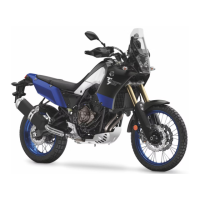
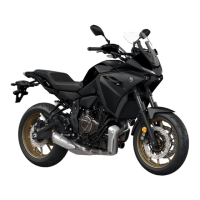
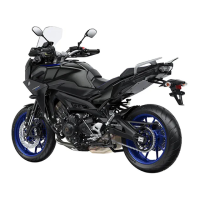
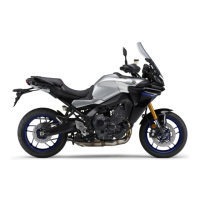
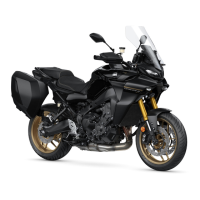
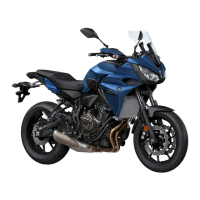
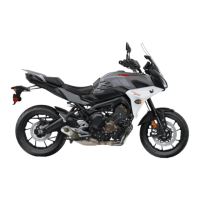

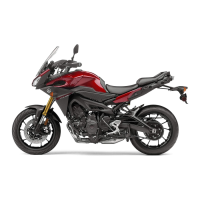


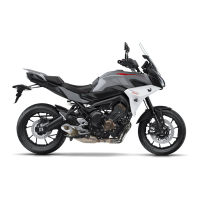
